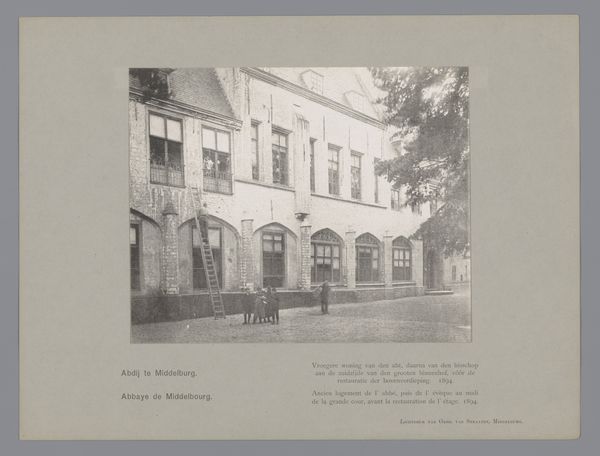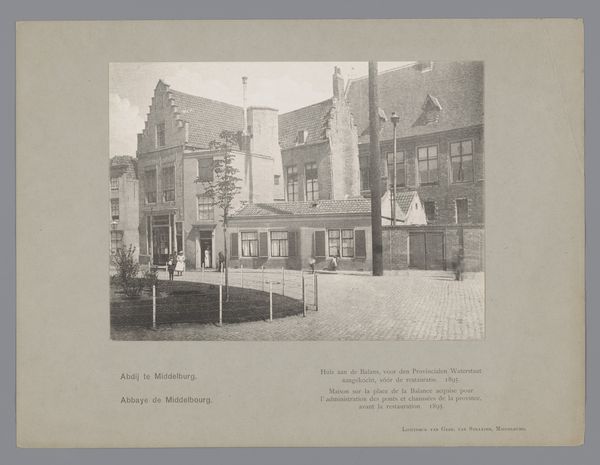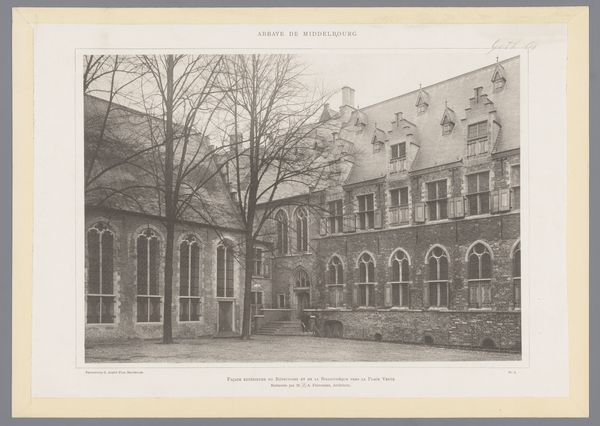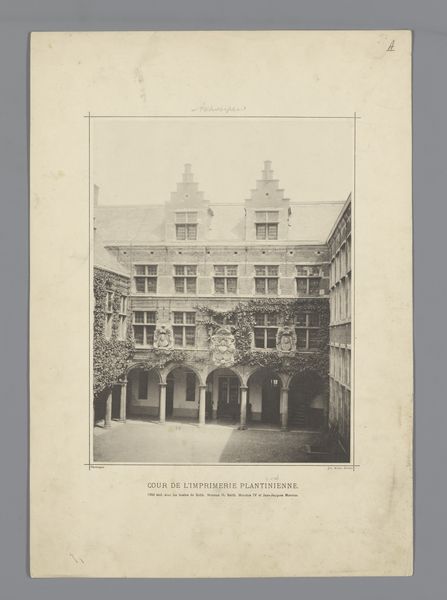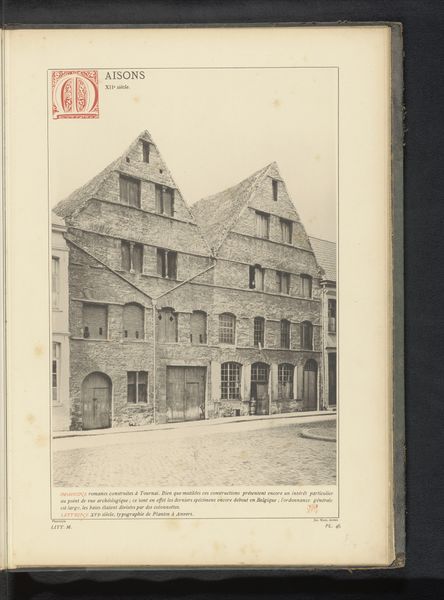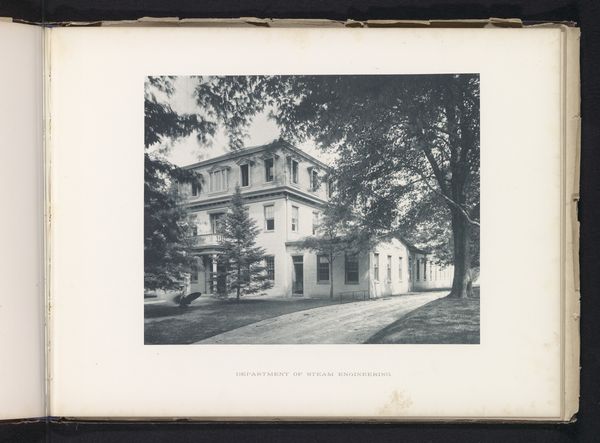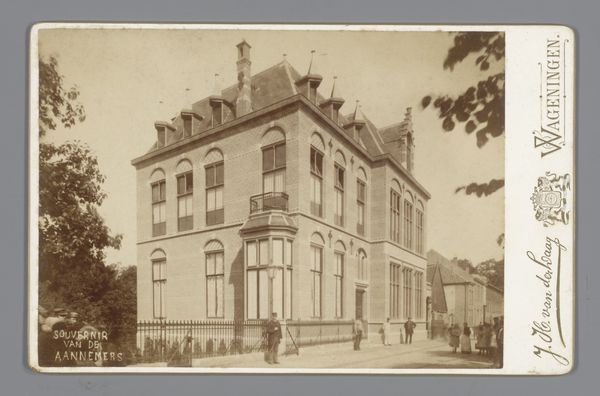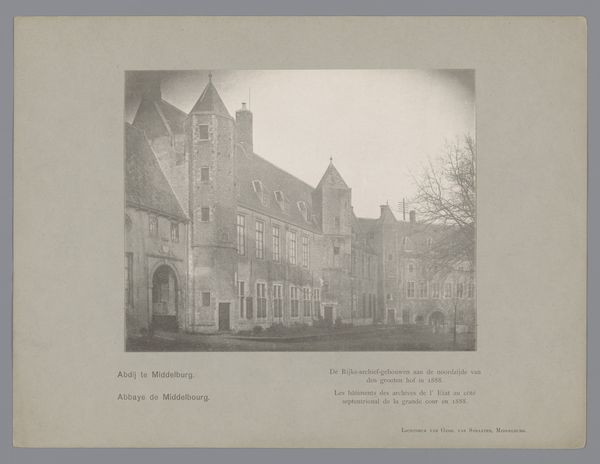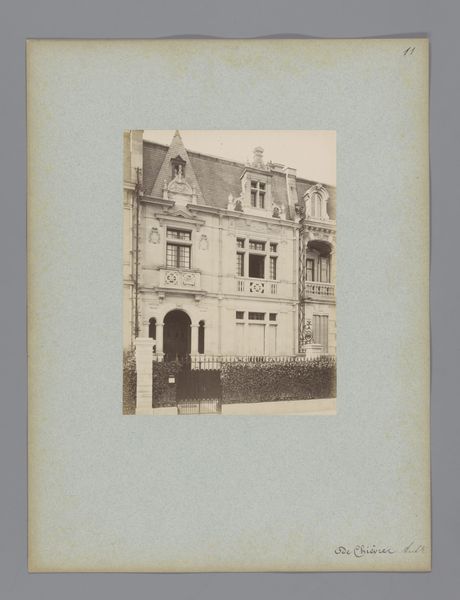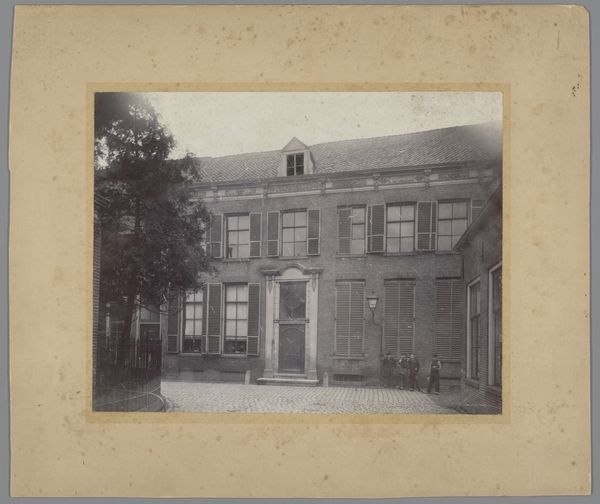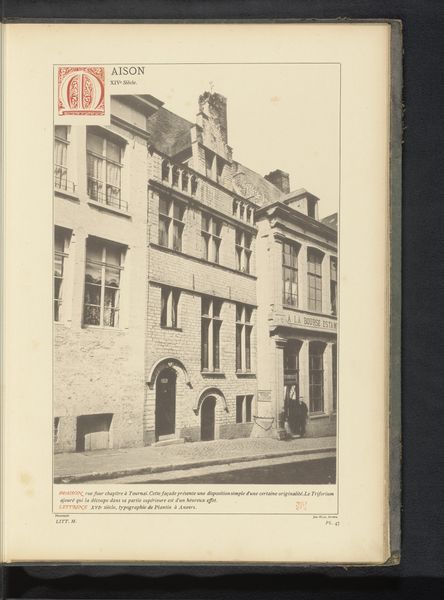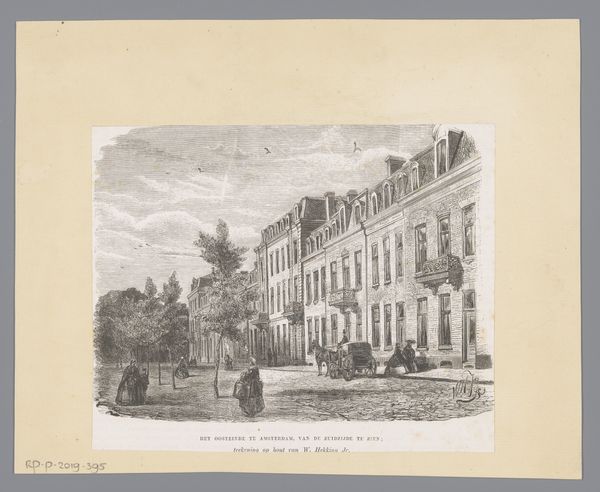
print, photography, architecture
#
dutch-golden-age
# print
#
photography
#
cityscape
#
architecture
Dimensions: height 150 mm, width 202 mm
Copyright: Rijks Museum: Open Domain
Editor: This is "Gezicht op de Abdij van Middelburg vanaf de binnenhof" – a photograph from after 1900 by the Gebroeders van Straaten. The stark black and white tones give it a very historical, documentary feel, almost like looking at an old record. How do you interpret this work, looking at it today? Curator: It’s interesting to consider this photograph as more than a simple depiction of architecture. Look at how the abbey dominates the frame, a symbol of power and historical weight. What might the photographers, working at the turn of the century, have wanted to communicate about the changing roles of religious institutions within Dutch society? How are we implicated by its very stoicism and grandiosity, removed by time yet reminded of enduring socio-political divides? Editor: That's interesting. I hadn't considered the potential commentary on power dynamics. So, seeing the Abbey as representative of historical power…does the photograph, being a new medium at the time, offer a subversive counter-narrative? Curator: Precisely. Photography, then a relatively new and accessible medium, provided a different way of documenting and interpreting the world, potentially challenging established narratives perpetuated by traditional institutions. Were the photographers actively critiquing the church, or simply documenting a changing landscape? Either way, the photograph invites us to reflect on how historical narratives are constructed and who controls them. How does the composition serve, or subvert, these narratives? Editor: I see. It's less about the abbey itself, and more about what it *represents* and how photography could reshape our understanding of these long-standing powers. I definitely have a new perspective. Curator: Exactly. It's not just about seeing the abbey; it’s about interrogating its significance within a complex web of social, political, and technological transformations. The power is in deconstructing the gaze and questioning established historical records.
Comments
No comments
Be the first to comment and join the conversation on the ultimate creative platform.
